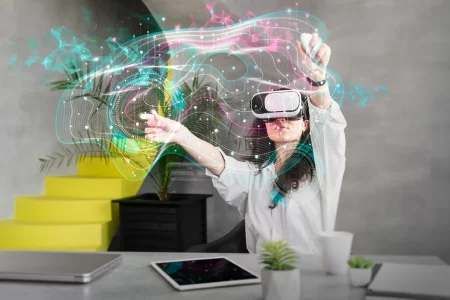 In today’s technology-driven world, virtual environments have become an integral part of our lives. From virtual reality (VR) gaming to remote collaboration, these immersive digital spaces offer endless possibilities. However, ensuring optimal performance and seamless experiences within virtual environments can be a complex task. This is where Virtual Environment Optimization (VEO) comes into play.
In today’s technology-driven world, virtual environments have become an integral part of our lives. From virtual reality (VR) gaming to remote collaboration, these immersive digital spaces offer endless possibilities. However, ensuring optimal performance and seamless experiences within virtual environments can be a complex task. This is where Virtual Environment Optimization (VEO) comes into play.
Today, we will delve into the concept of VEO and explore how it enhances our digital experiences.
Understanding Virtual Environment Optimization
Virtual Environment Optimization (VEO) is the process of fine-tuning and improving the performance of virtual environments. It involves optimizing various aspects such as rendering, latency, responsiveness, and user interactions to deliver a smooth and immersive experience.
VEO aims to minimize technical glitches, enhance visuals, and reduce latency, enabling users to enjoy virtual environments without disruptions.
Optimizing Rendering and Graphics
One crucial aspect of VEO is optimizing rendering and graphics. This involves optimizing the rendering pipeline, reducing rendering bottlenecks, and utilizing efficient rendering techniques.
By optimizing these aspects, VEO ensures that virtual environments deliver visually stunning and realistic experiences.
Reducing Latency
Latency refers to the delay between user input and system response. In virtual environments, even a slight delay can break immersion and hamper user experience.
VEO addresses latency issues by employing techniques like predictive tracking, minimizing network delays, and optimizing frame rates. By reducing latency, VEO enhances responsiveness and real-time interactions within virtual environments.
Improving System Performance
VEO also focuses on improving the overall performance of the underlying system running the virtual environment. This includes optimizing resource allocation, reducing unnecessary background processes, and utilizing hardware acceleration.
By optimizing system performance, VEO ensures that virtual environments run smoothly, even on resource-constrained devices.
Enhancing User Interactions
User interactions play a vital role in virtual environments. VEO optimizes the interactions between users and the virtual environment by implementing intuitive controls, accurate tracking systems, and natural motion detection.
These optimizations provide users with a seamless and immersive experience, making them feel more connected to the virtual world.
Virtual Environment Optimization (VEO) plays a crucial role in enhancing our digital experiences within virtual environments. As virtual environments continue to evolve and become more prevalent in various domains, VEO will play an increasingly vital role in shaping the future of digital experiences.
Picture Credit: Freepik
